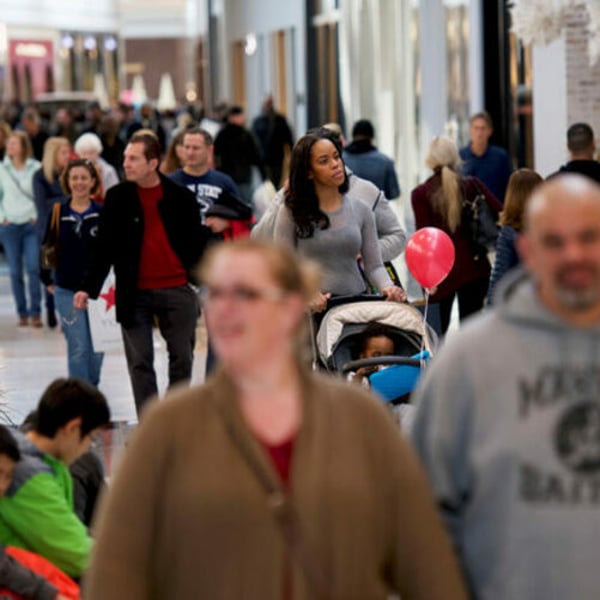By
Reuters
Published
July 17, 2025
U.S. retail sales rebounded more than expected in June, suggesting a modest improvement in economic activity and giving the Federal Reserve cover to delay cutting interest rates while it gauges the inflation fallout from import tariffs.

That report was reinforced by data from the Labor Department on Thursday that showed first-time applications for unemployment benefits dropped to a three-month low last week, consistent with steady job growth in July. The U.S. central bank is under pressure from President Donald Trump to lower borrowing costs.
The Fed is, however, expected to keep its benchmark overnight interest rate in the 4.25%-4.50% range, where it has been since December, at its policy meeting later this month.
“Today’s data is generally on the firmer side in terms of activity and jobs,” said James Knightley, chief international economist at ING. “It supports the view that there is little pressing need for another interest rate cut from the Fed.”
Retail sales increased 0.6% last month after an unrevised 0.9% drop in May, the Commerce Department’s Census Bureau said.
Economists polled by Reuters had forecast retail sales, which are mostly goods and are not adjusted for inflation, would gain 0.1%. Sales advanced 3.9% on a year-over-year basis.
Part of the nearly broad rise in retail sales last month was likely due to tariff-driven price increases rather than volumes.
Inflation data this week showed solid increases in June in the cost of tariff-sensitive goods like household furnishings and supplies, appliances, sporting goods and toys. Some economists said worries of even higher prices had lifted sales last month.
Still, the retail sales rebound after two straight monthly declines was welcome. Sales had decreased as the boost from households rushing to buy motor vehicles to avoid higher prices from import duties waned.
Auto dealerships led the rise in sales, with receipts increasing 1.2% after decreasing 3.8% in May. Car manufacturers, however, reported a decline in unit sales in June, indicating the rise in receipts was due to higher prices.
Building material garden equipment store sales increased 0.9% last month, as did receipts at clothing retailers. Online retail sales climbed 0.4%, while those at sporting goods, hobby, musical instrument and book stores rose 0.2%.
Sales at food services and drinking places, the only services component in the report, increased 0.6%. Economists view dining out as a key indicator of household finances.
But receipts at electronics and appliance stores dipped 0.1%, as did those at furniture outlets, suggesting tariff-related price rises were suppressing demand.
Stocks on Wall Street were trading higher. The dollar gained versus a basket of currencies. U.S. Treasury yields were mixed.
Retail sales excluding automobiles, gasoline, building materials and food services increased 0.5% last month after a downwardly revised 0.2% in May. These so-called core retail sales, which correspond most closely with the consumer spending component of gross domestic product, were previously reported to have increased 0.4% in May.
But higher prices in June implied that inflation-adjusted core retail sales rose marginally last month. Together with the downward revision to the May data, it suggests consumer spending increased moderately in the second quarter after nearly stalling in the first quarter.
Economists’ consumer spending growth estimates converged below a 1.5% annualized rate in the second quarter. Services, which account for a larger share of consumer spending, have been lackluster as households scaled back on travel.
The Atlanta Fed is forecasting GDP rebounded at a 2.4% annualized rate in the second quarter after contracting at a 0.5% pace in the January-March period. Most of the anticipated pick-up in GDP will come from an ebb in imports.
“Although June’s numbers likely exaggerate the underlying pace of spending, households appear to be on firmer footing than we had thought,” said Jonathan Millar, senior U.S. economist at Barclays.
Consumer spending is being supported by a stable labor market.
A separate report from the Labor Department showed initial claims for state unemployment benefits dropped 7,000 to a seasonally adjusted 221,000 for the week ended July 12, the lowest level since April.
Economists had forecast 235,000 claims for the latest week.
Motor vehicle assembly plant closures due to maintenance, annual retooling for new models and other reasons likely accounted for some of the drop in claims. Auto manufacturers typically idle assembly lines in summer, though the timing often varies, which could throw off the model that the government uses to strip out seasonal fluctuations from the data.
Nonetheless, layoffs remain historically low. The claims data covered the period during which the government surveyed employers for the nonfarm payrolls component of the employment report for July. Claims fell between the June and July survey periods. Nonfarm payrolls increased by 147,000 jobs in June.
“The series continues to signal steady labor market growth,” said Abiel Reinhart, an economist at J.P. Morgan. “Claims remain within the typical range observed over the last couple years.”
Risks are, however, rising for both the labor market and consumer spending. Trade policy uncertainty has left companies hesitant to increase hiring, causing many laid-off workers to experience long bouts of unemployment. The number of people receiving benefits after an initial week of aid, a proxy for hiring, increased 2,000 to a seasonally adjusted 1.956 million during the week ending July 5, the claims report showed.
Wage growth has also slowed. While the stock market has rebounded, house prices have declined in many regions, a reduction in household wealth that could hinder spending.
Higher prices from tariffs could also undercut consumption.
There are few signs of exporters absorbing tariffs. A separate report from the Labor Department’s Bureau of Labor Statistics showed import prices rose 0.1% in June.
But there were strong increases in the prices of imports from China, Japan and the European Union. Prices for imports from Canada and Mexico dipped 0.1%.
“If foreign exporters were absorbing the cost of tariffs, import prices would be declining in proportion to the rise in the tariff rate,” said Sarah House, a senior economist at Wells Fargo. “The recent rise in import prices points to foreign suppliers generally resisting price cuts.”
© Thomson Reuters 2025 All rights reserved.







